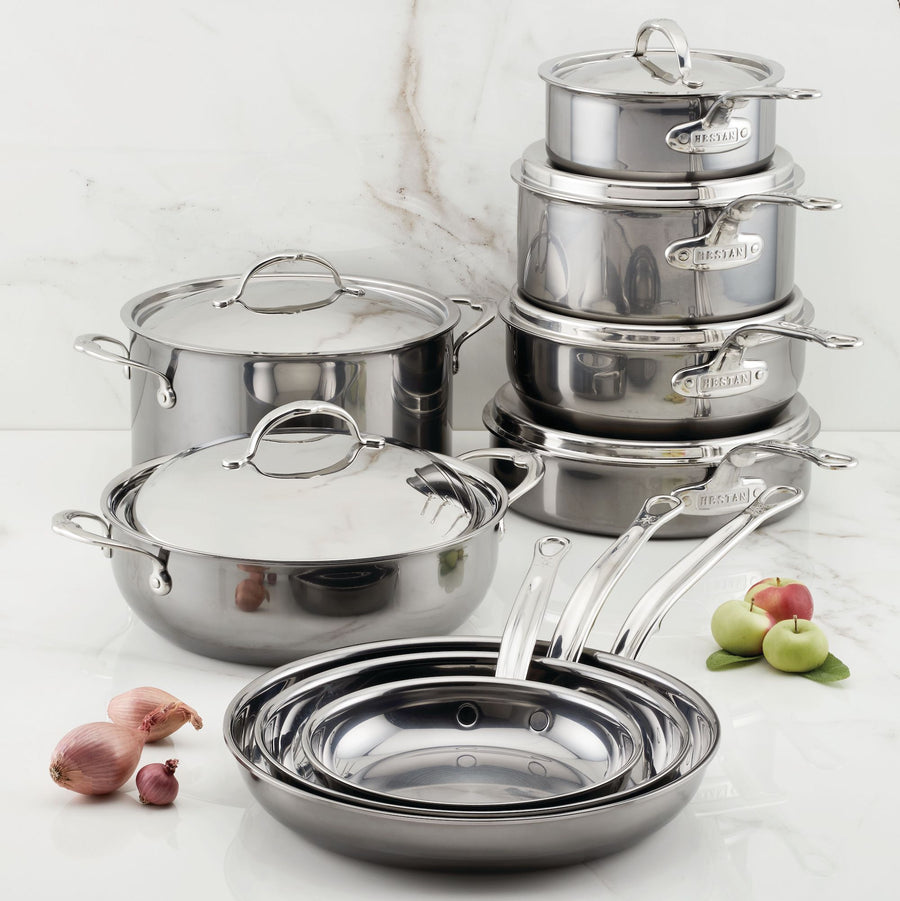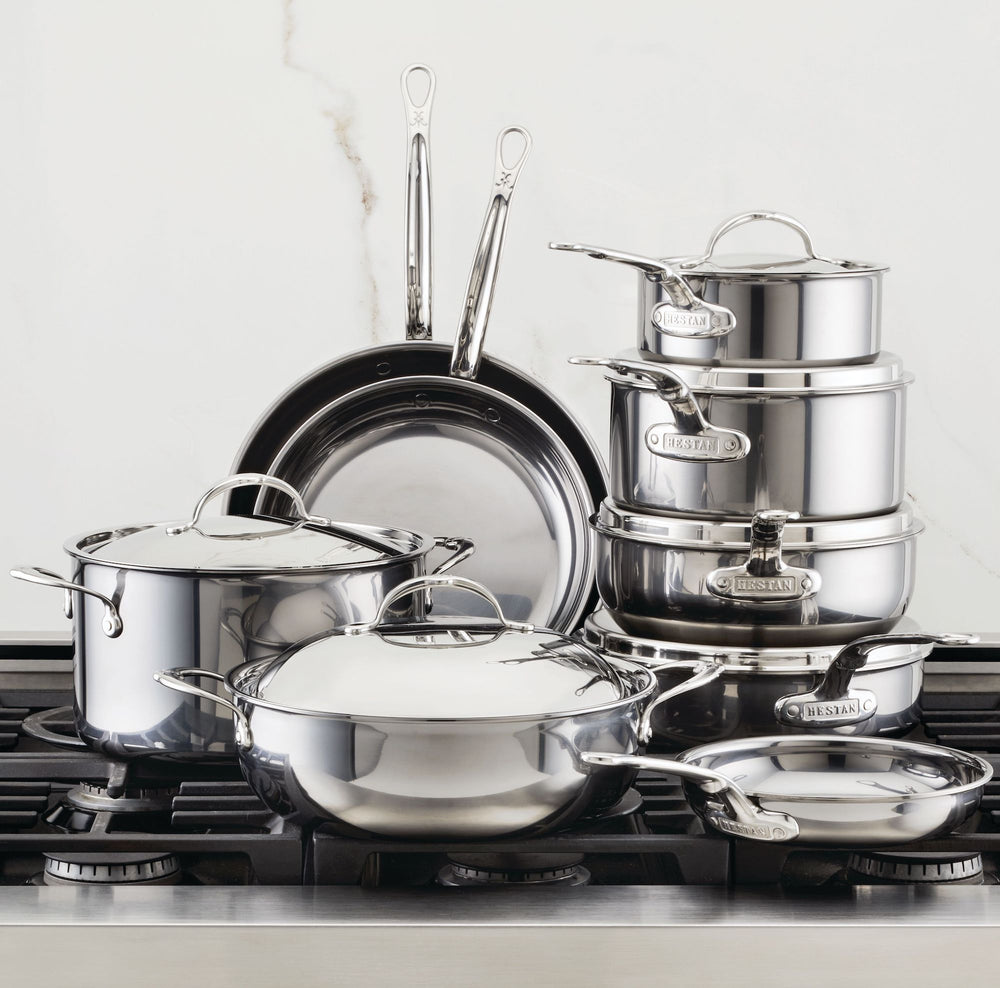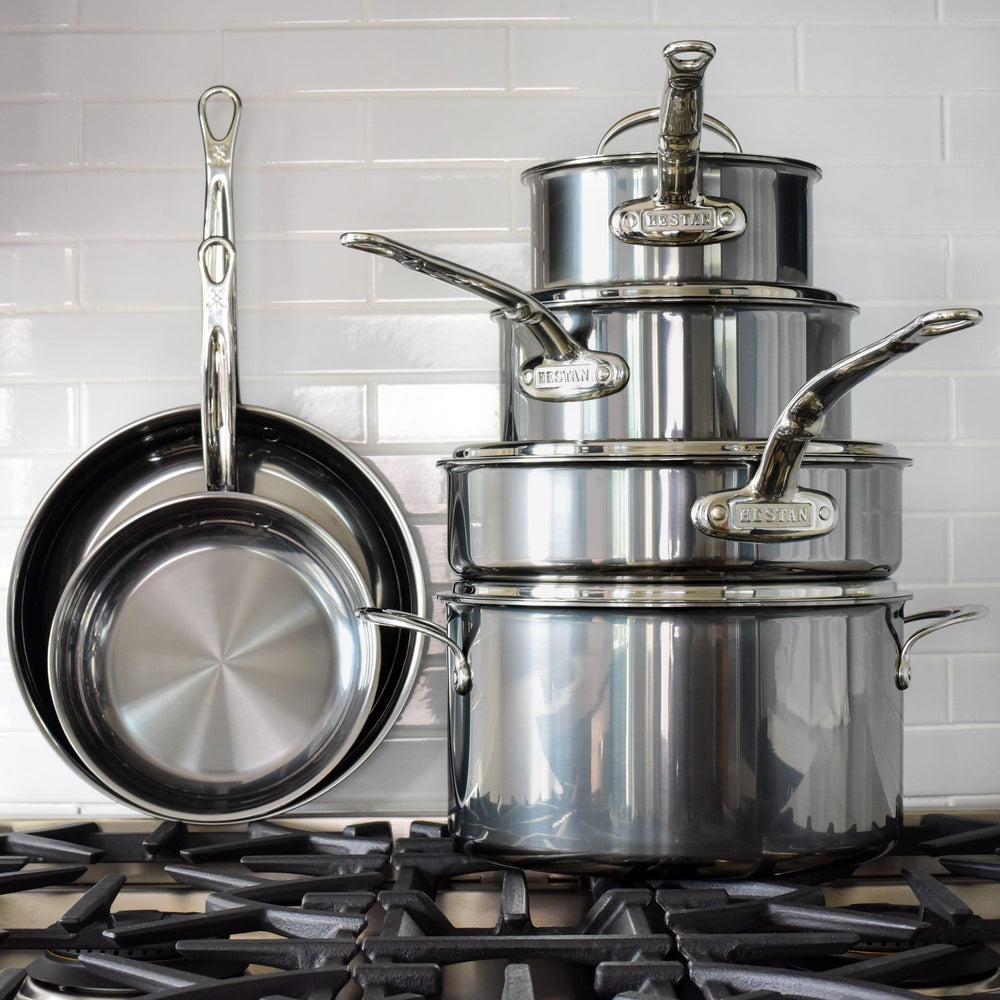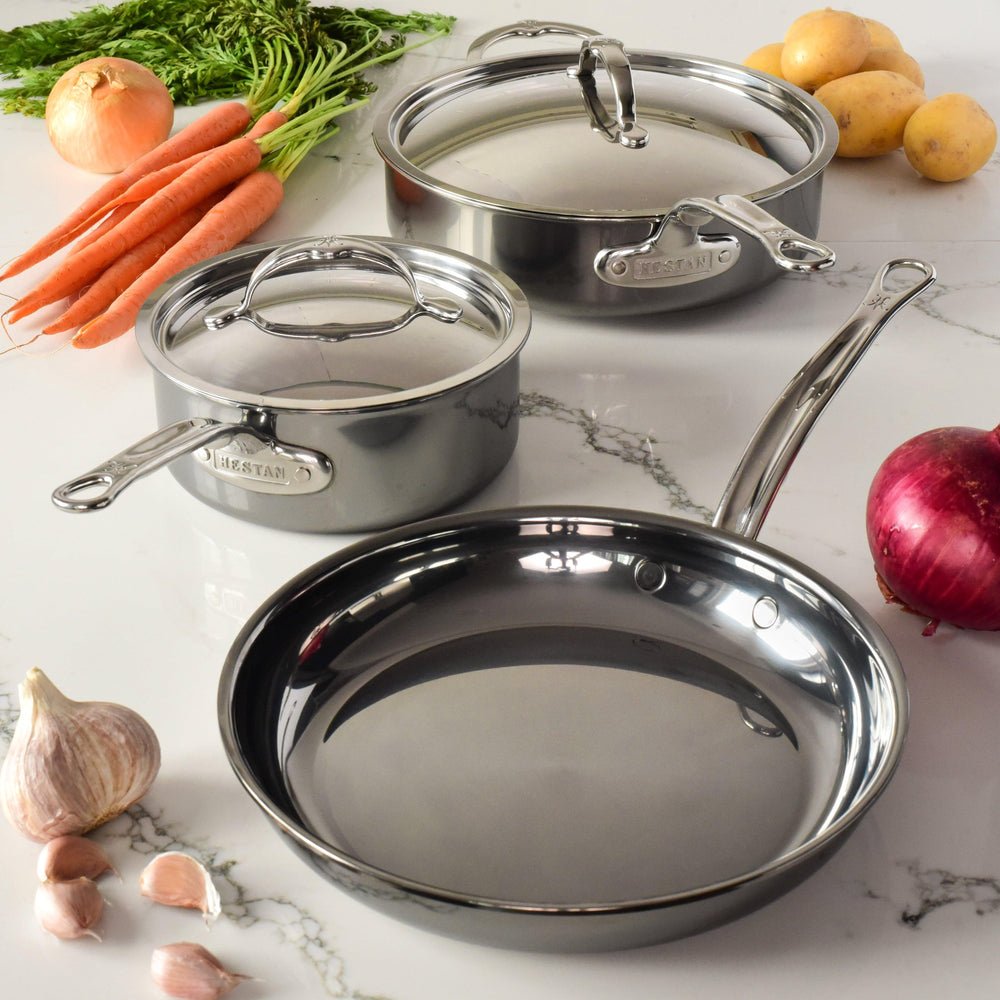Are Induction Cookware Sets Worth the Hype?
You definitely need induction cookware if you plan to use induction cooking, but investing in cookware is a long-term commitment. No one wants pots and pans that last a few years, and you’ll likely be updating your kitchen—maybe more than once—long before a high-quality cookware set requires an upgrade.
So before you even consider cookware sets, it’s essential to consider just how you’re cooking—now and in the future. Whether you use induction cooking now or might plan a kitchen upgrade in the future, what type of range you use long term and how you cook are all factors in choosing the best cookware sets for you.
Because manufacturers have discovered just how popular it is to transition from a gas to an induction heat source in kitchens these days, you shouldn’t be surprised to find that some of the highest quality cookware sets happen to be induction compatible as well.
So it’s time to really investigate the buzz about induction cooking. Because we’re committed to a high-performance culinary experience, we help guide you through the differences induction cooking can make in your kitchen experience and also help you understand more about how induction cookware sets can offer the durability, longevity, and efficiency you need in your kitchen.

Induction vs Gas: Do Cookware Sets Matter?
The short answer: definitely.
No matter what heat source you’re using, different types of cookware and materials they’re made from can have a tremendous impact on your end result. But you’re probably curious as to why induction-compatible cookware is highlighted so much. After all, you don’t see cookware being labeled as compatible with gas or electric ranges, and that’s because of the differences induction cooking brings to your kitchen.
Induction cooktops look a lot like their electric counterparts, but don’t let that fool you. They have some tremendous advantages to electric ranges, so much so that most people are more interested in how they compare to the traditional cooking powerhouse of gas stoves.
Induction cooking and gas stovetops each have their own set of advantages and considerations, but while induction cooking has been around for a while, it’s definitely gaining ground over its gas counterpart.
Consider the comparison:
- Heat source: Gas stovetops rely on an open flame to generate heat, while induction cooktops use electromagnetic technology to directly heat the cookware. Gas stoves provide visible flames, which some chefs prefer for visual cues, while induction cooktops offer precise and instantaneous heating.
- Control: Both induction and gas cooking offer excellent control over heat settings. Gas stoves typically have knobs that allow for easy adjustment of flame size, while induction cooktops offer digital controls for precise temperature adjustments. Induction cooktops respond more quickly to temperature changes, offering precise control over your cooking.
- Safety: Induction cooktops are generally considered safer than gas stoves because the burner doesn’t react unless there is an induction-compatible pan touching it. With gas, however, knobs can be turned on with an open flame, or they can be slightly turned on, pouring gas and other indoor pollutants into the kitchen. Gas stoves require careful attention to prevent accidents.
- Energy efficiency: Induction cooking is more energy-efficient than gas cooking because it heats the cookware directly, resulting in minimal heat loss. Gas stoves lose heat through the flame and surrounding air, making them less efficient overall. Induction cooktops can boil water faster and use less energy to maintain temperature, leading to lower utility bills.
- Cleanup: Induction cooktops have smooth, flat surfaces that are easy to clean. Gas stovetops have grates and burners that require regular cleaning to remove food debris and grease buildup. Induction cooktops offer both easier maintenance and a sleeker appearance in the kitchen.
- Installation and ventilation: Gas stoves require a gas line connection and proper ventilation. Induction cooktops require a dedicated electrical circuit and may need professional installation. Ventilation is less of a concern with induction cooking, as there are no combustion byproducts.
Benefits of Induction Cooking with an Induction Cooking Set

Although you have to use an induction cookware set for compatibility, for the seasoned and experienced home chef, induction cooking offers a range of advantages that can enhance the outcome and efficiency in your kitchen:
- Precise temperature control: Induction cooktops allow for precise temperature control, with the ability to adjust heat settings instantly and accurately. This level of control is especially beneficial for delicate cooking techniques such as tempering chocolate or simmering sauces, where precise temperatures are crucial.
- Even heat distribution: Unlike traditional gas or electric cooktops, which can have hot spots and uneven heat distribution, induction cooktops provide consistent and uniform heating across the entire cooking surface. This ensures that food cooks evenly and prevents uneven cooking or burning.
- Faster heating times: Induction cooktops heat cookware much faster than conventional methods, thanks to the direct transfer of electromagnetic energy to the pot or pan. This rapid heating reduces preheating times and allows for quicker cooking, which is advantageous when preparing meals with multiple components or when entertaining guests.
- Instant response: One of the key benefits of induction cooking is its instantaneous response to adjustments in temperature settings. When you lower or raise the heat level, the induction cooktop responds immediately, providing precise control over cooking processes such as searing, sautéing, or boiling.
- Energy efficiency: Induction cooking is highly energy-efficient compared to gas or electric cooktops. Since the heat is generated directly against the cookware, there is minimal heat loss, resulting in faster cooking times and lower energy consumption. This can lead to cost savings on utility bills over time.
- Easy cleanup: Induction cooktops have smooth, flat surfaces that are easy to clean and maintain. Since the cooktop itself doesn't get hot, spills and splatters are less likely to burn onto the surface, making cleanup a breeze. Simply wipe the surface with a damp cloth or sponge after cooking.
- Versatile cooking options: With induction cooking, home chefs have access to a wide range of cooking techniques and options. Whether you're searing, frying, boiling, simmering, or even melting chocolate, induction cooktops provide the precise heat control needed to execute each technique flawlessly.
- Space-saving design: Induction cooktops are often sleek and compact, making them an ideal choice for kitchens with limited space or for those who prefer a minimalist aesthetic. They can be installed flush with countertops or integrated into kitchen islands, maximizing usable workspace.
An induction cooking set can be used on all types of heat sources, but they’re specifically needed for induction cooking. So if you plan to upgrade to induction cooking to benefit from the precision, efficiency, and versatility it offers, the best induction cookware sets can offer unbeatable high performance for the heat you use now and in the future.
What Factors into the Best Induction Cookware Sets?
Induction cooking requires cookware that is compatible with magnetic induction technology. Specifically, the cookware must have a ferrous (magnetic) bottom that can interact with the electromagnetic field generated by the induction cooktop. This is essential because the heat is produced directly in the cookware itself through electromagnetic induction, rather than through a flame or electric heating element.
Of course, as Americans transition from gas cooking to induction, many manufacturers claim to have induction-compatible cookware, but seasoned home cooks aren’t simply looking for compatible cookware. You’re looking for high-quality, long-lasting induction cookware sets. So look for these factors to find the best induction cookware sets:
- Material: Stainless steel and cast iron are the best materials to react with an induction cooktop, but stainless steel offers more even heating than cast iron, longer durability, and much simpler maintenance.
- Base: The bottom of induction cookware needs to be flat, but you also want a thick base for more consistent cooking.
- Quality: Cookware that chefs use is always a great choice as anything that can hold up to a professional chef’s cooking will be durable and long-lasting for the home chef.
Using non-compatible cookware on an induction cooktop will not generate heat effectively. This can lead to uneven cooking, longer cooking times, or even damage to the cookware or the cooktop itself. So you need to have the right type of cookware for your induction cooktop to benefit from the optimal performance the cooktop can give.
If you’re looking for induction cookware sets that hold up to all the hype, then Hestan’s ProBond stainless steel cookware is a great choice. Made in Italy, this high-quality cookware promises high performance and excellent results for the experienced home cook.











